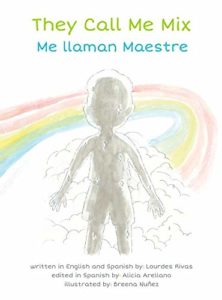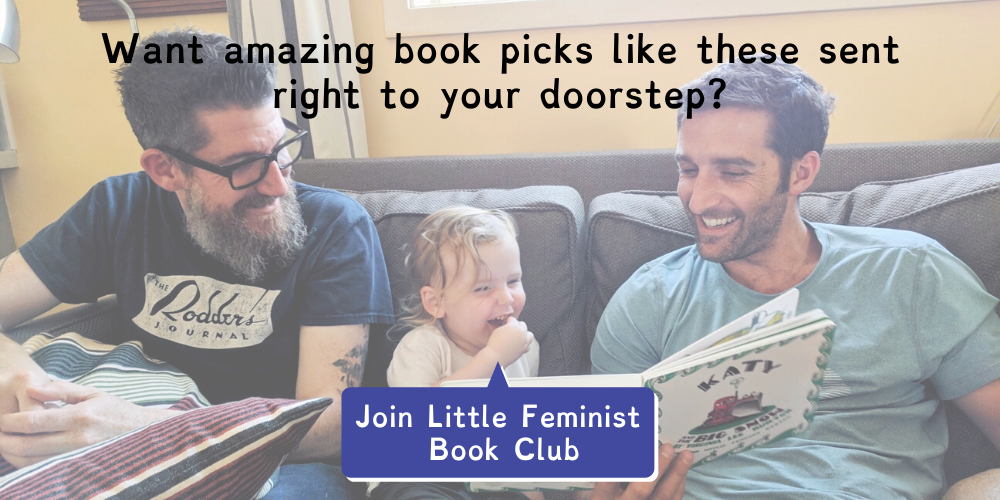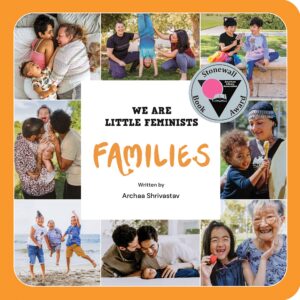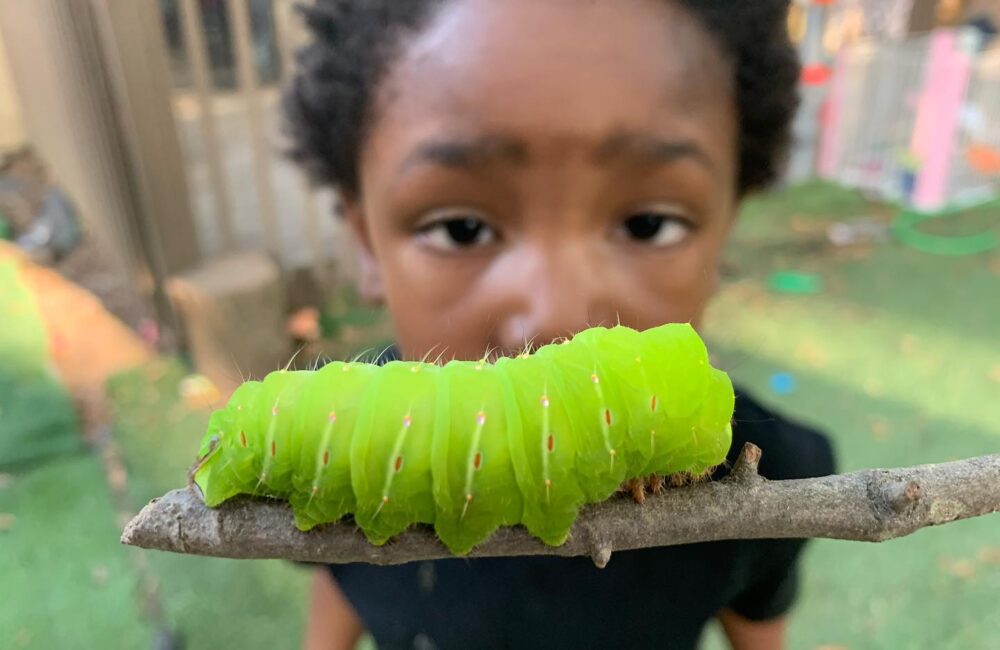If you are signed up for our book club, you’ll know that we featured Sylvia & Marsha Start a Revolution by Joy Ellison, The Bare Naked Book by Kathy Stinson, Introducing Teddy by Jessica Walton, and When Aidan Becomes a Brother by Kyle Lukoff. Because you probably loved these books and are craving more, here are more of our favorites to help your child understand gender as a spectrum rather than a binary categorization.
To help you find what you are looking for, we’ve divided this list into three parts:
- Informational books about gender and pronouns,
- Stories about transitioning, and
- Books about gender presentation and breaking gender stereotypes.
Part 1: INFORMATIONAL BOOKS ABOUT GENDER & PRONOUNS
We know that gender is a social construct and that socialization starts at a very young age. Rather than shy away from these discussions and allow society and mainstream media to shape our children’s perceptions, these books help form foundational understandings about bodies and identity.
- Best for ages 0-3
A board book for our youngest kiddos with gorgeous illustrations of all types of people. There’s no way to know someone’s pronouns unless you ask them, so go ahead!
What we love: This book is simple and has no narrative. It’s perfect for letting young kids discover and notice things for themselv
Things to know: This book is a joyous introduction to people and their pronouns, and how gender expression doesn’t always match someone’s gender identity.
- Best for ages 2-5
Finally, a book that truly bares it all, pun intended. The Bare Naked Book normalizes and celebrates all types of bodies through awesome illustrations and simple questions asking readers to look at and celebrate their own bodies!
What we love: The inclusiveness of this anatomy book is off the charts and allows readers to see bodies as beautiful. We appreciate how the book exposes readers to bodies rarely showcased and teaches love for everybody.
Things to know: This book was recently updated from its 1986 version to include more diverse people and presentations of gender. While The Bare Naked Book was a novel when it was first published, the author recognized how outdated her work had become. You’ll appreciate her 2021 author’s note, which shares insights like why they decided to feature ambiguous genitals. We love that this title serves as a reminder on our bookshelves to never stop challenging our mindsets and growing our understanding.
Your Whole Body: From Your Head to Your Toes, and Everything in Between!
- Best for ages 3-6
Once your child is ready for a little more description than The Bare Naked Book contains, check out Your Whole Body! It is an inclusive book for children about the entire body and helps grown-ups teach their children the names of the genitals in a comfortable and natural way by seamlessly weaving in the explanations and illustrations as the book explores the body.
What we love: This book contains complete explanations, illustrations, and labels for all the major body parts including genitals. The text and illustrations describe and show different appearances and abilities, and we love that the book does not use gender pronouns when describing genitals or any of the characters depicted.
Things to know: The author of this book is a parent who was looking for a book that would help her teach her child to accurately name and describe their own body parts, but couldn’t find one, so she wrote it herself after consulting with child safety experts, pediatricians, gender specialists, and educators.
- Best for ages 3-8
Follow Ari through their neighborhood as they try to find their words in this sweet, accessible introduction to gender-inclusive pronouns that is perfect for readers of all ages.
What we love: We love that this book shows how different pronouns make the main character feel (how some don’t feel right and some do feel right, described with lots of other words). Each person has words that include but are not limited to their pronouns, rounding out each person we encounter as more of a multidimensional person, not just pronouns or gender.
Things to know: This book includes some neopronouns and ideas on how to ask people what their words are!
It Feels Good to Be Yourself: A Book About Gender Identity
- Best for ages 3-6
Following a group of friends, this picture book showcases the many forms of gender identity. It Feels Good to Be Yourself is a wonderfully simple book about gender that normalizes childrens’ experiences.
What we love: This book is very straightforward and explains the terms transgender, cisgender, and non-binary using accessible language and understandable examples. This story both validates our feelings about ourselves and is a great starting off point to discuss how the gender we’re assigned at birth isn’t always right.
Things to know: The author of this book is a parent of a transgender child and the illustrator identifies as non-binary.
- Best for ages 4-8
Perfect for the age when kids are asking a lot of “how’s” and “why’s”, What Makes a Baby satisfies youngsters who are curious about babies and where they come from.
What we love: The text uses gender-neutral language, such as “people with eggs” and “people with sperms,” expanding our ideas about conception. The illustrations reflect this deliberately inclusive approach via Smyth’s bold, multi-colored silhouettes without gendered body parts.
Things to know: A great book choice for kiddos who know someone that’s expecting a child or has a new sibling arriving soon.
- Best for ages 7-10
Looking for a way to discuss gender identity, gender presentation, and what gender even is with your little reader? Maya Gonzalez draws on queer and indigenous scholarship for her framework and accompanies her text with vibrant and expansive pictures.
What we love: The detail and dedication to articulating these complicated concepts for young audiences is clear in the language and in the drawings Gonzalez uses and creates.
Things to know: We originally published this list recommending Who Are You? by Brooke Pessin Whedbee as easier to understand than The Gender Wheel. While we found that to be true then, we now appreciate the decolonizing take on how gender can be taught to kids. More importantly, Maya Gonzalez published an article on her blog detailing how she felt Who Are You? plagiarized her work in The Gender Wheel. We did not learn of this until after we published that version, but now include this note. Our apologies for not catching this sooner. We cannot support nor recommend a book that has possibly plagiarized another person’s body of work, nor one that whitewashes the content, as Gonzalez claims. This is a good reminder that being a conscious consumer is not just about the end product itself, but also about how it is produced.
Sex is a Funny Word: A Book About Bodies, Feelings, and You
- Best for ages 8-10
An award-winning comic book, Sex is a Funny Word provides a comprehensive look at what the word “sex” means, in particular, for a diverse cast of characters. Exploring gender, bodies, and sexual orientation, this book discusses respect, boundaries, and safety in an open and thoughtful way that facilitates similarly open and thoughtful conversations
What we love: The four narrators, Zai, Cooper, Mimi, and Omar, ask many questions that are helpful for young readers to consider and respond to. Explanations provided within the book are ungendered (which is extra great when it comes to body parts)!
Things to know: This book is not entirely about the gender spectrum. As the author notes in the beginning, this book is intended to be read over a long period of time, with room for questions and discussions.
Part 2: Books about transgender children and the process of transitioning
Gender does not mean sex, yet we live in a world that equates them anyways. The books in this section showcase children living their gender! The process of transitioning takes so many different forms. These titles exemplify the representation transgender children (and adults) deserve, and the exposure cisgender children (and adults) need to both celebrate and advocate for their peers.
- Best for ages 4-8
Calvin comes out as transgender to his family, and is worried about what people will think when he returns to school after transitioning. His family is nothing but affirming and helps him overcome his concern with love and empathy.
What we love: What really matters to children is feeling accepted for who they truly are, and this book exemplifies that completely.
Things to know: Authors Vanessa and JR have a transgender son and we love “own voices” stories like this!
- Best for ages 4-8
My Rainbow is our favorite children’s book normalizing and celebrating an autistic trans girl. The love and affirmation that Trinity’s family expresses throughout the book is beautiful.
What we love: Trinity co-authored this story with her mom, making it both an authentic and easy-to-understand story for kids. We think every family should have at least one book that has a transgender protagonist, and My Rainbow is so affirming we believe that it should be on all classroom and home bookshelves!
Things to know: At Little Feminist, we deeply believe that Black trans disabled lives matter, and we are indebted to Trinity and her mother DeShauna (who is also queer!) for writing this incredible book filled with so many important openings for conversations about Autism, the history of hair in the black community, what it means to be transgender.
- Best for ages 6-9
Payton is a Lakota child who gets a little help from their family members and a two-spirit elder in expressing their two-spirit self and dancing at a powwow in regalia that represented themself fully.
What we love: It’s hard to find two-spirit representation in children’s books, and it shows how to support and show up for our loved ones and community members. This book brought us to tears!
Things to know: We wish that throughout this book, Peyton had been referred to as their name or a different pronoun instead of “she” after Peyton expressed that they were two-spirit.
- Best for ages 7-10
They Call Me Mix is a bilingual (English and Spanish) children’s book about what it means to be a Latinx transgender person in a culture where gender categories can make life difficult. Lourdes has a hard time even imagining where they’ll ever fit in until they find queer and trans community where they feel empowered to reinvent language that works for them and we see them doing fun everyday things with friends.
What we love: The last few pages show the main character, now an adult, explaining that they became a teacher (and wrote this autobiographical book). It’s a rare and needed vision (at least in children’s picture books) of a nonbinary child who grew up into a successful adult.
Things to know: The author, Lourdes Rivas, is a kindergarten teacher in a public elementary school!
- Best for ages 8-12
Follow a young trans girl through her experience of becoming her true self publicly.
What we love: This is a great book for transgender youth to read to see a character that represents them. It’s also a wonderful read for cisgender youth, to help them support transgender peers.
Things to know: This book was formerly published under the title “George” but the author changed the title in 2021 to better reflect the needs of the main character.
- Best for ages 8-12
The author of When Aidan Became a Brother has written a wonderful ghost story focusing on three main themes: gender identity, grief, and ghostly hauntings, through the eyes and experiences of the main character, Bug.
What we love: This book is about an 11-year-old finding their identity, while also grappling with grief and familial relationships, as well as a resident ghost!
Things to know: This book deals with the main character’s grief over their uncle dying, which may be a complex topic for some children to read about independently.
Part 3: Books about gender presentation and breaking gender stereotypes
Gender presentation is a visual symbol of how people self-identify in the world. However, we know that how someone expresses themself on the outside (choices in clothing, hairstyle, makeup, etc.) does not always match their gender identity or pronouns. It’s important to remember, and teach our children, that the only way we know someone’s gender identity is to ask them. We recognize that people can wear clothing that breaks gender stereotypes; a boy wearing a skirt doesn’t make him LGBTQ+. Clothing doesn’t have a gender, despite the untrue and unfair stereotypes assigned to them.
We Are Little Feminists: Families
- Best for ages 0-5
The only board book to ever win a medal from the American Library Association (the Stonewall Medal in 2021), We Are Little Feminists: Families, showcases all the wonderful forms of family, gender, and sexuality with beautiful photos and rhymes on each page.
What we love: The book features a photo of a Transgender male that is pregnant, which is such a great conversation starter for families and educators alike. Plus there is a great discussion guide in the back of the book too.
Things to know: While this book is currently only offered as a board book, it will still hold a 5-6-year-old’s attention!
- By Stacy Davids, illustrated by Rachael Balsaitis
- Ages 3-8
It’s Annie’s uncle’s wedding! Annie plans to wear her favorite plaid shirt, the one that she always wears, every day. Annie’s mom says girls wear dresses to weddings, but dresses make Annie feel like she isn’t herself. What will she do?
What we love: Annie’s Plaid Shirt addresses how her mom worries about Annie and wonders if she made the right decision in asking her to wear a dress. This shows that parents and adults aren’t always sure of themselves, which presents a good opportunity to talk with your little reader about this topic.
Things to know: Annie’s Plaid Shirt contains relatively simple text and is somewhat lacking in depth of character and storyline. The ending, while mostly satisfying, feels a bit forced. Nonetheless, we’ve kept this book on our list because there are so few books about girls presenting as masculine in their choice of clothes. Is That for a Boy or a Girl? by S. Bear Bergman is another option if you’re in the market for these specific stories.
One of a kind, like me/Único Como Yo
- By Laurin Mayeno, illustrated by Robert Liu-Trujillo
- Ages 4-8
The school parade is coming up and Danny knows just what he wants to be: a princess! He even has the perfect dress in mind. The problem is, he can’t find it!
What we love: With the help of his mom, Danny creates the dress of his imagination, sewing together a curtain and a bathrobe. When parade day comes, some kids comment on his attire, stating that they’ve never seen a boy princess before. Danny humorously relieves the tension by responding that he’s never seen a walking butterfly or a talking pineapple.
Things to know: There are a good number of other books that address boys being into stereotypically “girly” things. We liked Sparkle Boy which would be particularly helpful for children who might be struggling to understand their sibling’s presentation. My Princess Boy, Morris Micklewhite and The Tangerine Dress, 10,000 dresses, and Jacob’s New Dress are other reading options. Our first choice is One of a Kind, Like Me because Danny is free to be himself and the book does not focus on overcoming bullying like other books on this topic do. While it’s always important to share stories of overcoming bullying, normalizing acceptance can be just as powerful!
—
Well there you have it, 17 more amazing books to keep the themes of Sylvia & Marsha Start a Revolution by Joy Ellison, The Bare Naked Book by Kathy Stinson, Introducing Teddy by Jessica Walton, and When Aidan Becomes a Brother by Kyle Lukoff. Make sure to tell us your family’s favorites!
Want more? Sign up for the Little Feminist Book Club. We send new favorites to our members every month!

























 in Oakland, CA
in Oakland, CA